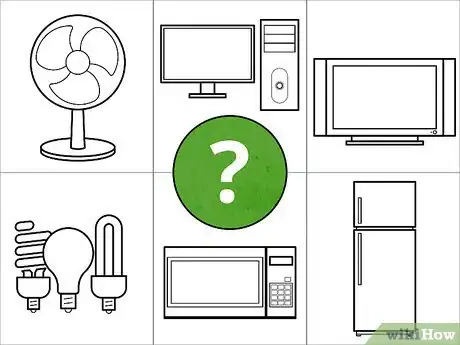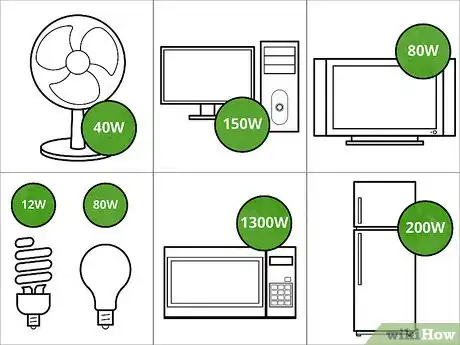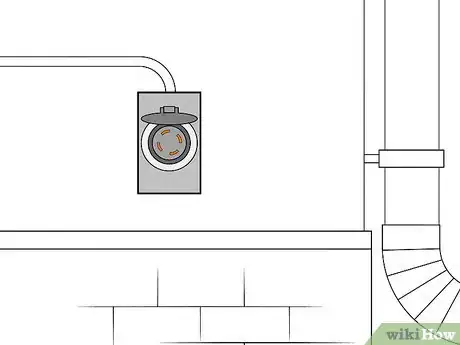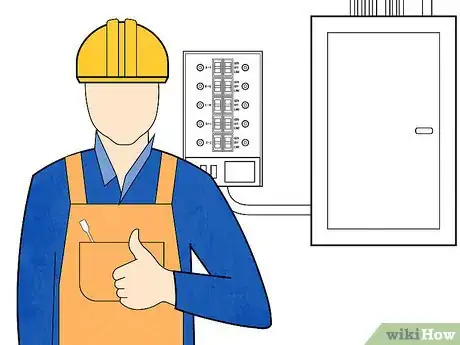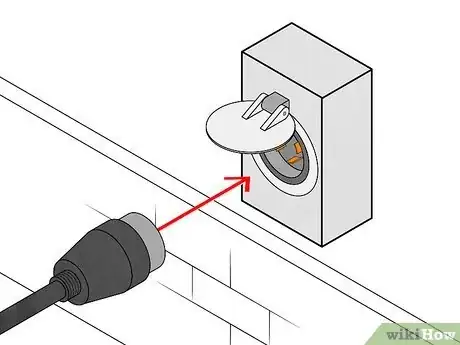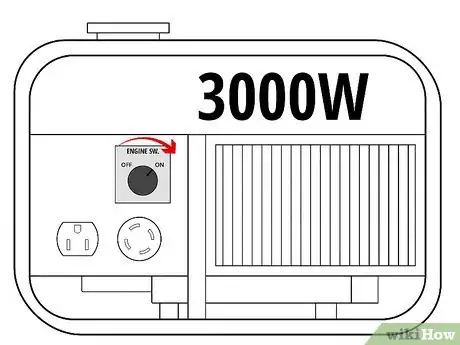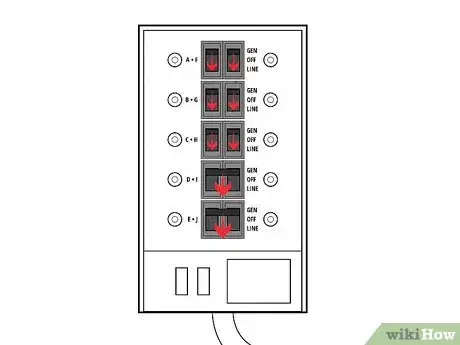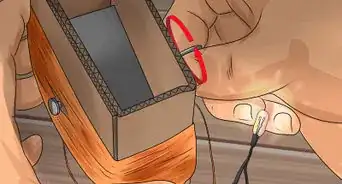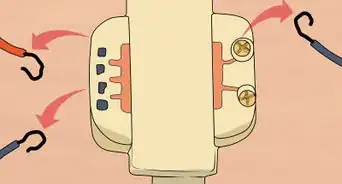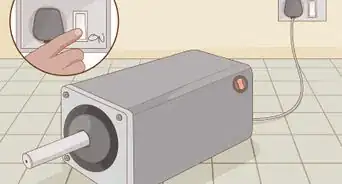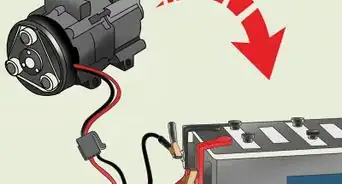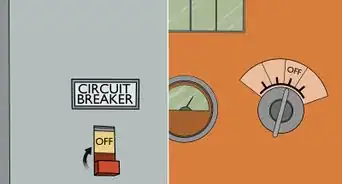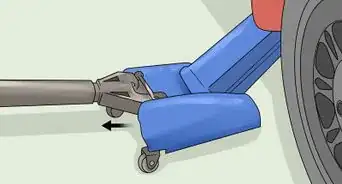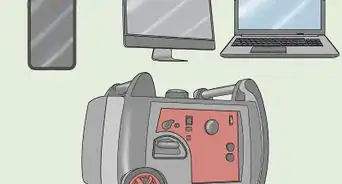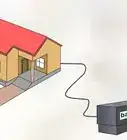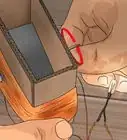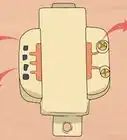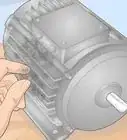This article was co-authored by Daniel Stoescu. Daniel Stoescu is a Master Electrician and the Owner and Operator of Home Tech Solutions, LLC in Hampton, Virginia. With over a decade of experience, Daniel specializes in wiring residential, commercial, and light industrial structures. The Home Tech Solutions team has over four decades of combined experience and offers comprehensive solutions for residential electrical needs.
wikiHow marks an article as reader-approved once it receives enough positive feedback. This article received 13 testimonials and 95% of readers who voted found it helpful, earning it our reader-approved status.
This article has been viewed 1,042,985 times.
A portable generator can provide emergency electrical power to a home when the main power source, especially that from the national grid, goes out. It does not have to provide power to all the appliances in the home but only to essential services like lighting, TV, fridge, etc. Stoves, air conditioners and tumble driers among others use too much power to be supplied by a typical portable generator.
Things You Should Know
- Opt for a manual transfer switch wiring system over an interlock kit. It needs to be installed professionally, but it's a safer and guaranteed legal option.
- Install an inlet box hookup on the exterior of your home. Place the generator as far away from your house as you can while still being able to plug it in.
- Plug the generator into the inlet box and check that it has enough oil. Turn it on and flip the breakers one by one to power your home.
Steps
Wiring the System
-
1Determine the essential appliances in the home you cannot do without. A petrol-driven generator with a rated power of about 3500W will serve for lighting, TV, fans and a fridge or freezer. The rated power is usually written on the body of the generator and it is that power the generator can deliver continuously for an average of 12 hours on a single tank of fuel.[1]
-
2List the appliances and electrical devices you plan to use, then look at their wattage or power requirement. A typical microwave, for instance, uses 1500 watts, while a whole circuit of lights with CFC bulbs may only require 150 watts. Refrigerators use about 1200 - 1500 watts, but have a starting capacitor which increases the wattage momentarily when the compressor starts. Televisions use less the 1000 watts, depending on the type and size, a small room fan may use about 500 watts, and so on.Advertisement
-
3Choose a wiring system. There are several different wiring systems that can be used to connect a generator to a home. The main two are discussed here. Contact your local Department of Labor and Industries, Planning Department, or Power Company to find out what is legal in your area. Do not consult the internet to find out which system is legal in your area. There are many people that are unqualified to offer advice doing just that, and the law can vary significantly between countries, states, and even cities.
- Consider an interlock kit. These are fairly simple to install yourself and they are the cheapest option. However, they are illegal in many areas and can be very unsafe. They must be installed absolutely correctly. Safe installation also requires that you have several extra spaces in your existing breaker box or that you install a new one, which must be done professionally. It is also a strict requirement that you get a kit that is approved for your specific breaker box (should be made by the same company).
- Consider a manual transfer switch. This is a slightly more expensive piece of equipment which will require a professional install. However, it is the only guaranteed legal option and it is accordingly the safest. This will help keep you from accidentally electrocuting someone else or even yourself.
-
4Install an inlet box hook up. This hookup will go on the outside of your house and will have a recessed male connector (prongs that stick out, rather than holes you plug in to). It will connect to whichever panel system you installed inside your house. The installation should be performed by a professional, both to keep you safe and to make sure your system remains up to code. If you do not have this done by a professional, your insurance may be unable to cover your home, the city you live in could enforce a heavy fine, and you are very likely to hurt either yourself or someone else (in a hospital-if-you're-lucky kind of way).[2]
-
5Keep your family safe! You will find a lot of advice and instructions offered on the internet that are unsafe and put you at risk for injury, electrocution, or serious house fire. Be sure to always check with your city specialists before doing anything that will put you or your family at risk. Some common Do Nots include:[3]
- Do not connect your generator directly to your breaker box without an approved transfer switch.
- Do not connect your generator to a washing machine or dryer outlet.
-
6Get your setup inspected. This is especially important if you do not have experience with electrical work. You want to be sure that your family stays safe and, in the event of a fire, that your insurance company cannot dispute your claim because of "faulty wiring".[4]
Plugging it in
-
1Place the generator away from your home. Place the generator as far away from your home as you can with the cable that it comes with. This is to prevent your home catching fire, should something go wrong with the generator, and to avoid the deadly carbon monoxide poisoning from the generator exhaust. This is a basic safety precaution, and should not be ignored.
-
2Plug in your generator to the hookup. Match the holes at the end of the generator's cord to the prongs on your hookup. Plug it in. You will likely have to then turn the plug connection to complete the connection (usually about 15 degrees).
-
3Plug your attachment cable into your generator. Your generator should have come with a cable to use to connect to your house. Plug it in, select which voltage you want (if you can), and do the same turn that you did with the other end and the receptacle.
-
4Check the engine. Check that the throttle for the engine is in the correct position and that the engine has enough oil. You may also need to preheat the engine with the glow plug, depending on where you live.[5]
-
5Start the engine. Start your generator's engine according to manufacturer's instructions.
-
6Switch the systems. Go to your breaker. Flip off the utility main and turn on the generator main.
-
7Flip the breakers. Flip the breakers on the system that you installed, turning on all of the loads one by one (slowly).
-
8Return to utility power. In order to return to use of utility power, reverse the order of operations.
Community Q&A
-
QuestionCan I plug a six-prong outlet extension into my generator so I can run a few 110-120 small appliances?
 Community AnswerAs long as you do not exceed the power rating of the generator or its specific outlet, expanding the number of devices this way is fine. Keep in mind that increasing the number of devices also increases the chance that an electrical fault could occur, necessitating a protection device of some kind. Many generators include protection, but a power strip with additional protection may be wise. You also need to be sure that the cabling and connectors used are designed to handle the amount of current that would flow when all of the devices are on.
Community AnswerAs long as you do not exceed the power rating of the generator or its specific outlet, expanding the number of devices this way is fine. Keep in mind that increasing the number of devices also increases the chance that an electrical fault could occur, necessitating a protection device of some kind. Many generators include protection, but a power strip with additional protection may be wise. You also need to be sure that the cabling and connectors used are designed to handle the amount of current that would flow when all of the devices are on. -
QuestionWith a small (3600w) generator, can I fashion an extension cord with double male plugins and simply trip the house main, then plug one end into the generator and the other end into an outlet? Wouldn't that power all the outlets on that circuit even though we would only use a few at any one time?
 Community AnswerDo not do this! Although this makes logical sense, the issue is that there will be no safe way to disconnect the power in an emergency if (when) someone is being electrocuted. Also, there will be no fail-safe, in the event of an electrical short-circuit, and this will pose a serious fire hazard. Having any "double-male" power cord is dangerous and would be illegal to plug in just about anywhere that has safety rules.
Community AnswerDo not do this! Although this makes logical sense, the issue is that there will be no safe way to disconnect the power in an emergency if (when) someone is being electrocuted. Also, there will be no fail-safe, in the event of an electrical short-circuit, and this will pose a serious fire hazard. Having any "double-male" power cord is dangerous and would be illegal to plug in just about anywhere that has safety rules. -
QuestionWhat happens with the generator when the local power goes back on?
 Community AnswerSince you are instructed to shut off the main breaker when you use the generator, nothing will happen. If you install a transfer switch it is impossible for the generator and the main electrical power to both feed the system at the same time, if wired correctly.
Community AnswerSince you are instructed to shut off the main breaker when you use the generator, nothing will happen. If you install a transfer switch it is impossible for the generator and the main electrical power to both feed the system at the same time, if wired correctly.
Warning
- Electrical work is extremely dangerous. If you are unsure of what to do, it is best to call a professional.
References
- ↑ http://engineering.electrical-equipment.org/electrical-distribution/generator-ratings-back-to-basics-2.html
- ↑ https://www.todayshomeowner.com/video/how-to-setup-a-generator-to-provide-power-for-your-home/
- ↑ https://safeelectricity.org/public-education/tips/generator-safety/
- ↑ http://www.aqmd.gov/home/permits/emergency-generators
- ↑ http://www.kohlerpower.com/home/faq/index.html
About This Article
Before connecting a portable generator to your house, place the generator as far away from your home as you can to prevent fire or carbon monoxide poisoning. Then, plug the generator into the hookup on your house. Before you turn the system on, check that the throttle for the engine is in the correct position and that the engine has enough oil. Once the generator is running, go to your breaker, turn off the switch for the utility main, and turn on the switch for the generator main. Next, flip the breakers on the system that you installed one by one. For information about the installing the generator hookup for your house, read on!
